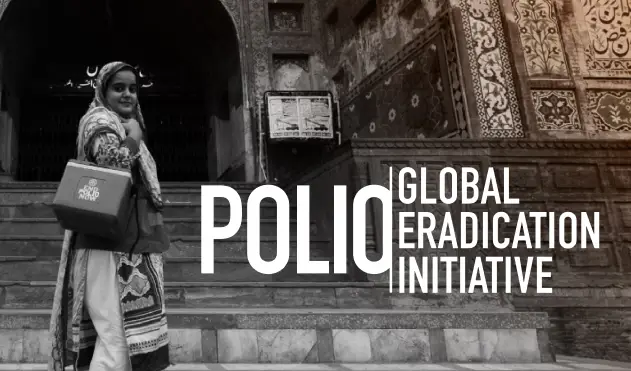Introduction

Polio, also known as poliomyelitis, is a highly infectious disease that can cause paralysis, disability, and even death. Despite significant progress in reducing polio cases worldwide, the disease still persists in some parts of the world, particularly in areas with weak health systems, conflict, and poor sanitation. The Global Polio Eradication Initiative (GPEI) launched in 1988, has made tremendous progress in reducing polio cases by over 99%. However, to finally eradicate polio, the GPEI has developed a new strategy, the Global Polio Eradication Strategy 2025, which outlines a comprehensive approach to achieving a polio-free world.
History of Polio Eradication Efforts
The global effort to eradicate polio began in 1988, when the World Health Assembly adopted a resolution to eradicate polio by 2000. Since then, significant progress has been made, with the number of polio cases declining from an estimated 350,000 in 1988 to just 33 in 2020. The GPEI has been led by national governments, with support from the World Health Organization (WHO), Rotary International, the Centers for Disease Control and Prevention (CDC), and the United Nations Children’s Fund (UNICEF), among others.
Global Polio Eradication Strategy 2025
The Global Polio Eradication Strategy 2025 is a comprehensive plan that outlines the steps needed to achieve a polio-free world. The strategy is based on five core components:
- Immunization: Strengthening immunization systems to ensure that all children are vaccinated against polio, with a focus on reaching children in hard-to-reach areas.
- Surveillance: Enhancing surveillance systems to detect and respond to polio cases quickly, with a focus on improving data quality and timeliness.
- Community Engagement: Engaging with local communities to build trust and increase demand for polio vaccination, with a focus on addressing vaccine hesitancy and misinformation.
- Outbreak Response: Developing and implementing effective outbreak response plans to quickly contain and stop polio outbreaks.
- Research and Development: Continuing research and development to improve polio vaccines, diagnostic tools, and other technologies to support polio eradication efforts.
Key Strategies
The Global Polio Eradication Strategy 2025 also outlines several key strategies to support the core components, including:
- Vaccine Switch: Switching from the oral poliovirus vaccine (OPV) to the inactivated poliovirus vaccine (IPV) in routine immunization programs, to reduce the risk of vaccine-associated polio cases.
- Fractional Dosing: Implementing fractional dosing of IPV, to increase vaccine availability and reduce costs.
- Immunization Campaigns: Conducting regular immunization campaigns to reach children who have not been vaccinated, with a focus on hard-to-reach areas.
- Cross-Border Cooperation: Enhancing cross-border cooperation to prevent the spread of polio across international borders.
- Financing: Securing sufficient financing to support polio eradication efforts, with a focus on increasing domestic funding and reducing reliance on external funding.
Challenges and Opportunities
Despite the progress made in reducing polio cases, several challenges remain, including:
- Conflict and Insecurity: Ongoing conflict and insecurity in some countries, which hinders access to health services and polio vaccination efforts.
- Vaccine Hesitancy: Growing vaccine hesitancy and misinformation, which can reduce demand for polio vaccination.
- Funding Gaps: Insufficient funding to support polio eradication efforts, which can jeopardize progress.
- Climate Change: Climate change, which can increase the risk of polio transmission and outbreaks.
However, there are also opportunities to overcome these challenges, including:
- Innovation: Leveraging new technologies and innovations, such as digital health tools and new vaccine technologies, to support polio eradication efforts.
- Global Cooperation: Enhancing global cooperation and partnerships to support polio eradication efforts, including collaborations between governments, international organizations, and civil society.
- Community Engagement: Engaging with local communities to build trust and increase demand for polio vaccination, which can help to address vaccine hesitancy and misinformation.
Frequently Asked Questions (FAQs)
- What is polio?
Polio, also known as poliomyelitis, is a highly infectious disease that can cause paralysis, disability, and even death. - How is polio transmitted?
Polio is transmitted through the fecal-oral route, where the virus is shed in the stool of infected individuals and can contaminate food, water, and surfaces. - What are the symptoms of polio?
The symptoms of polio can range from mild flu-like symptoms to paralysis, disability, and even death. - How can polio be prevented?
Polio can be prevented through vaccination, with multiple doses of the oral poliovirus vaccine (OPV) or the inactivated poliovirus vaccine (IPV). - What is the Global Polio Eradication Initiative?
The Global Polio Eradication Initiative (GPEI) is a global effort to eradicate polio, led by national governments, with support from international organizations and civil society. - What is the goal of the Global Polio Eradication Strategy 2025?
The goal of the Global Polio Eradication Strategy 2025 is to achieve a polio-free world by 2025, through a comprehensive approach that includes immunization, surveillance, community engagement, outbreak response, and research and development.
Conclusion
The Global Polio Eradication Strategy 2025 is a comprehensive plan that outlines the steps needed to achieve a polio-free world. While significant progress has been made in reducing polio cases, challenges remain, including conflict and insecurity, vaccine hesitancy, funding gaps, and climate change. However, with innovation, global cooperation, and community engagement, it is possible to overcome these challenges and achieve a polio-free world. The success of the Global Polio Eradication Strategy 2025 will depend on the commitment and cooperation of governments, international organizations, civil society, and individuals around the world. Together, we can eradicate polio and create a healthier, more equitable world for all.
Closure
Thus, we hope this article has provided valuable insights into Global Polio Eradication Strategy 2025: A Comprehensive Approach to Eradicating a Devastating Disease. We thank you for taking the time to read this article. See you in our next article!